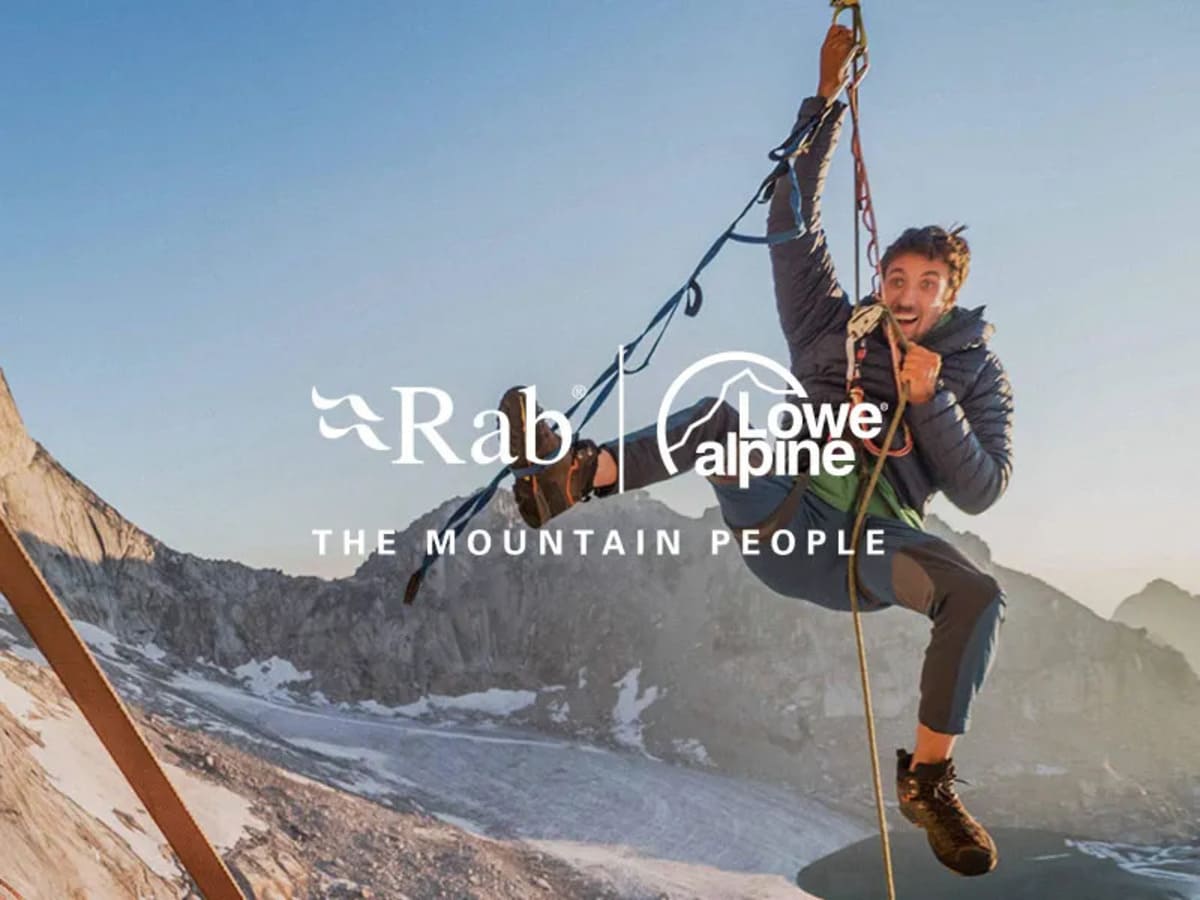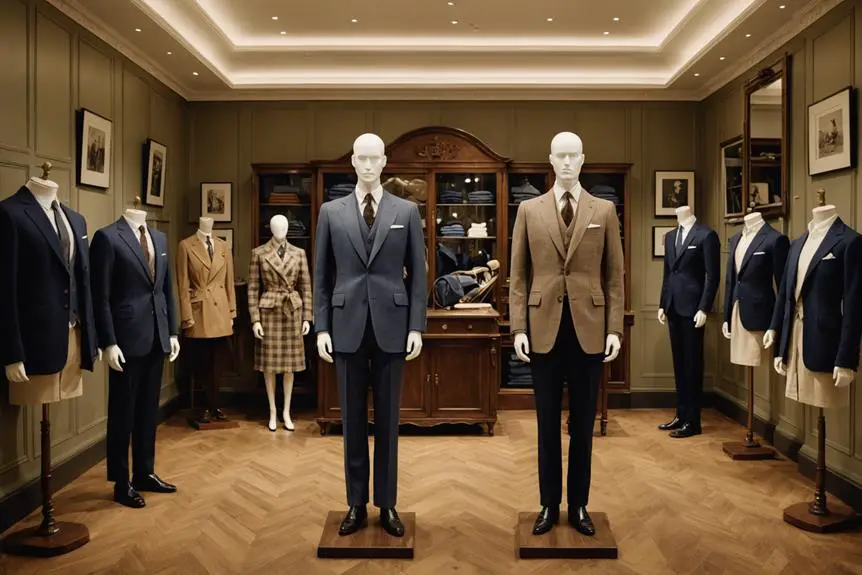Rab, a name synonymous with rugged outdoor apparel, was founded in 1981 by Scottish climber Rab Carrington. This brand’s origins are rooted in Carrington’s own adventures, which began in the late 1960s and spanned expeditions across the Alps and Himalayas. A pivotal moment came in 1973 during an expedition to Patagonia when Carrington found himself stranded in Buenos Aires due to a dock strike. With climbing equipment stuck in Liverpool, Carrington turned to local friend Hector Vieytes, who introduced him to the art of making sleeping bags. This unplanned detour laid the groundwork for what would become a leading name in outdoor gear.
Upon returning to the UK, Carrington settled in Sheffield, close to the Peak District, and began producing his own line of sleeping bags. Initially hand-stitched in his attic, these bags quickly gained popularity among his climbing peers, thanks to their innovative design and superior quality. In 1981, Carrington officially founded Rab, transitioning production to a factory in Sheffield. His firsthand climbing experience translated into products that were lightweight, durable, and reliable, setting Rab apart in the burgeoning outdoor gear market. The company’s reputation grew as word of mouth spread, and soon, Rab’s sleeping bags and jackets became essential gear for mountaineers worldwide.
Today, Rab continues to honor the high standards and pioneering spirit of its founder. Even after Carrington’s retirement in 2007, the brand has remained committed to producing high-performance mountain clothing and equipment. Now under the ownership of Equip Outdoor Technologies, Rab has expanded its product range while maintaining a focus on quality and sustainability. With a commitment to using premium materials like European down and adopting eco-friendly practices, Rab ensures that its gear is not only top-notch but also responsibly made. The brand’s dedication to innovation and community remains steadfast, embodying the spirit of adventure and resilience that Carrington instilled from the very beginning.
Rab Meridian Jacket Showcase
How to tell if Rab is vintage from the logo
Rab has built a reputation for creating high-quality outdoor clothing and gear, with its logo becoming a recognized mark of durability and performance. Identifying whether a Rab item is vintage can often be done by examining the logo. Here’s a guide to help you determine the era of your Rab product based on the logo.
1981 to now Rab logo
- The original and current Rab logo features a distinctive design with stylized waves to the left of the text “Rab”.
- The font is serif with elegant curves, giving it a timeless and classic appearance.
- The waves symbolize the brand’s association with outdoor and extreme weather conditions.
- Since its introduction, this logo has remained largely unchanged, reflecting the brand’s consistent quality and reliability.
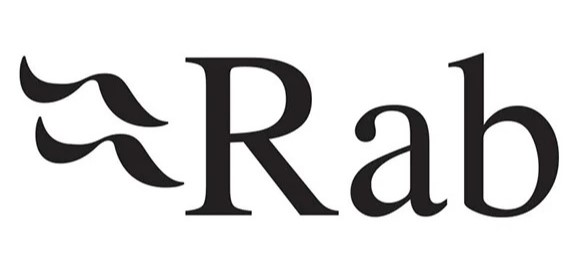
1981 to now Rab logo
How to tell if Rab is vintage from the tags
The evolution of Rab tags reflects the brand’s growth and changes over the decades. From its origins in Sheffield to global manufacturing, the tags provide key insights into the era of each garment. Vintage Rab items can be identified through various tag designs, materials, and information provided on the labels.
Can’t figure out your vintage tags or labels? Upload a picture on our vintage tag identification page, and we’ll assist you!
1980s vintage Rab tags
- Bold, serif lettering for the Rab logo.
- Tags often include “Hand Made in Sheffield, England” indicating local production.
- Size indicators usually present alongside the main logo.
- Occasionally features additional product information such as material and care instructions.
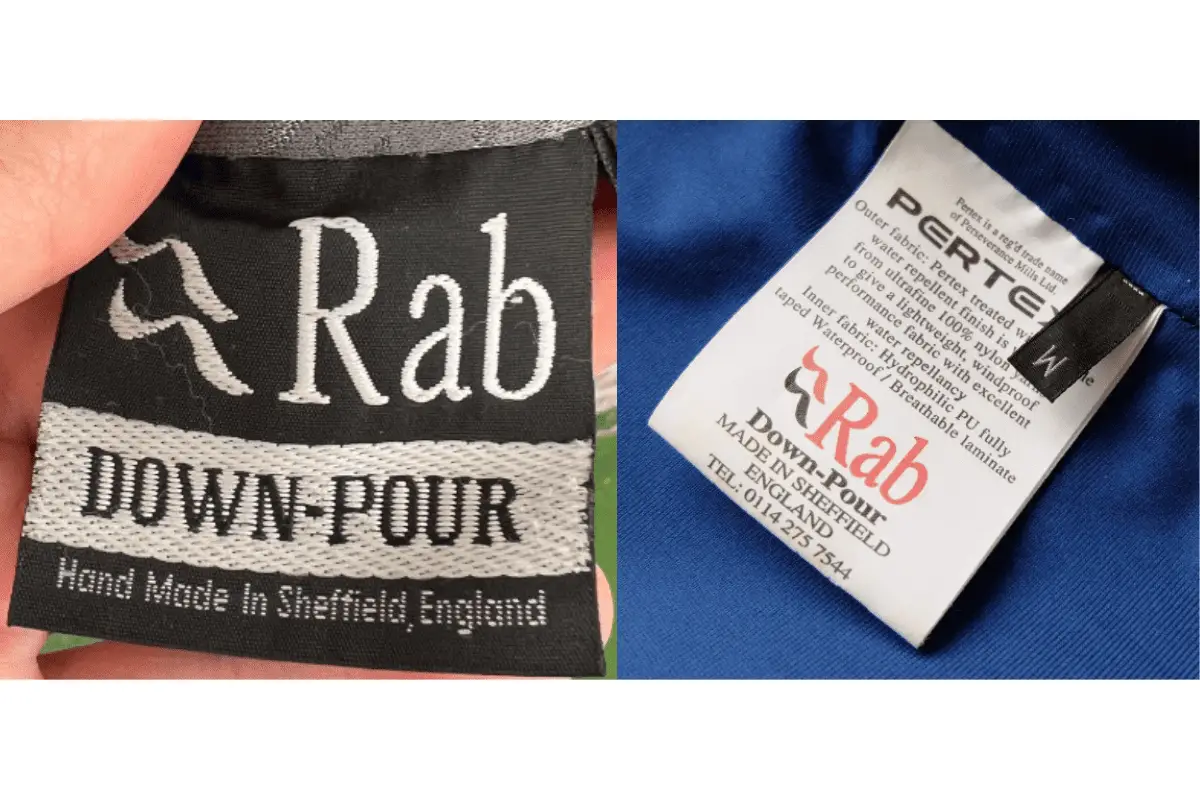
1980s Rab tags
1990s vintage Rab tags
- Introduction of more detailed product information, including batch numbers and fabric details like Pertex.
- Tags still primarily produced in England with “Made in Sheffield, England” prominently displayed.
- Use of both serif and sans-serif fonts for different sections of the tag.
- Size tags often included as a separate, smaller tag beneath the main label.
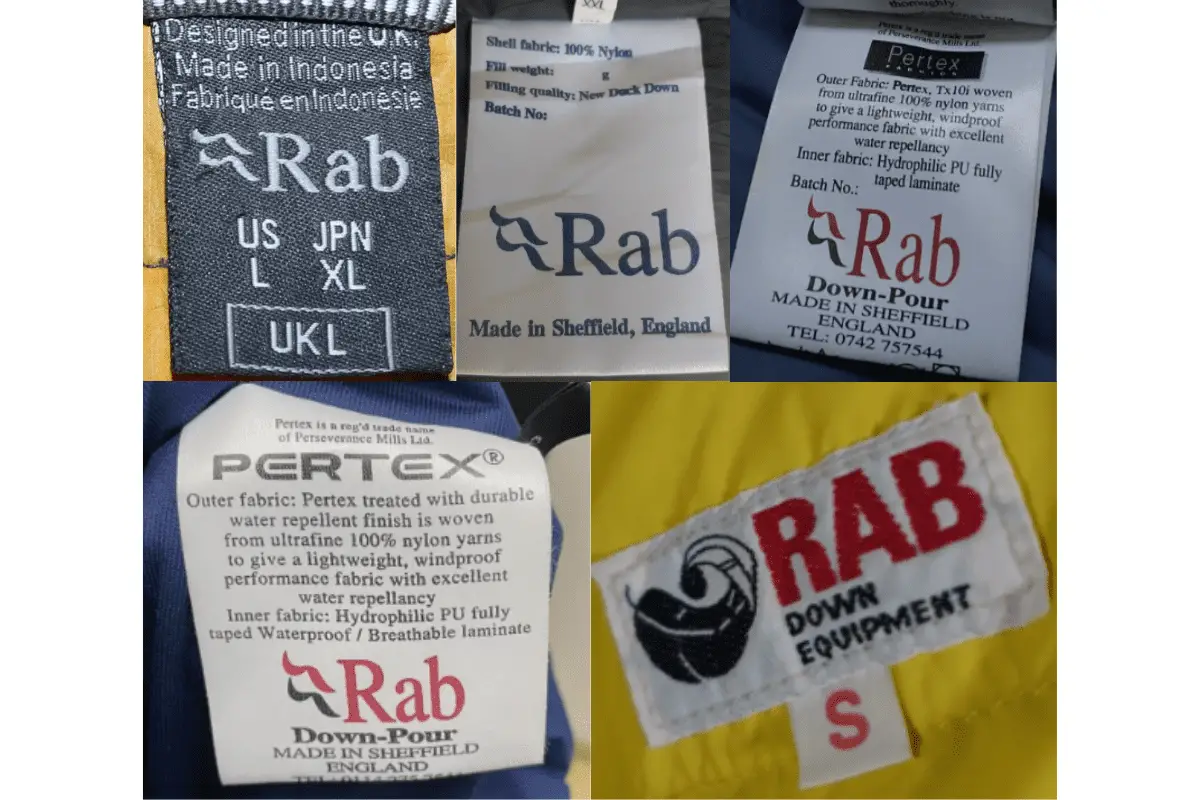
1990s Rab tags
2000s vintage Rab tags
- Modernization of the tag design with a mix of serif and sans-serif fonts.
- Introduction of darker tag colors and more durable materials.
- Still includes “Made in Sheffield, England” on many items, but some products start to feature international production locations.
- More detailed care instructions and product information included.
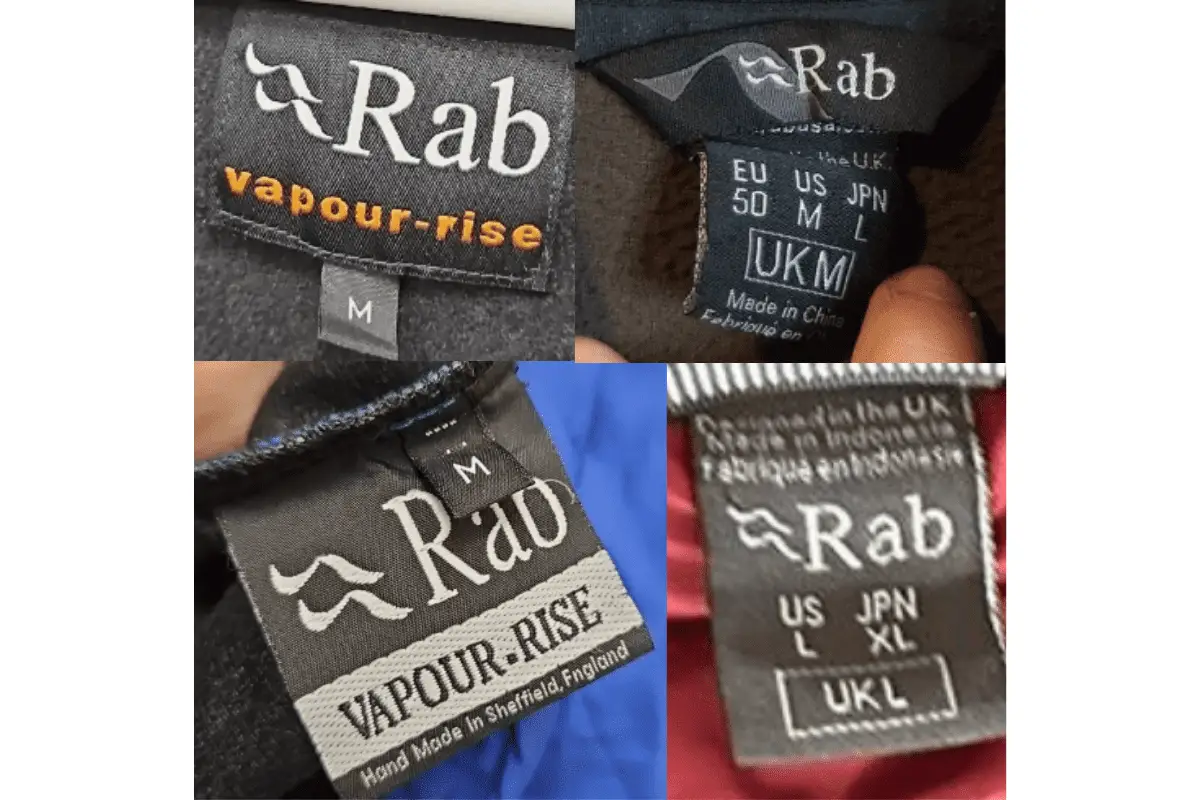
2000s Rab tags
2010s vintage Rab tags
- Further modernization with sleek, minimalist designs.
- Tags often feature international manufacturing locations, reflecting the brand’s global expansion.
- Introduction of new tag styles and layouts, including loop tags and printed labels.
- Use of various colors and materials for tags, adapting to different product lines and styles.
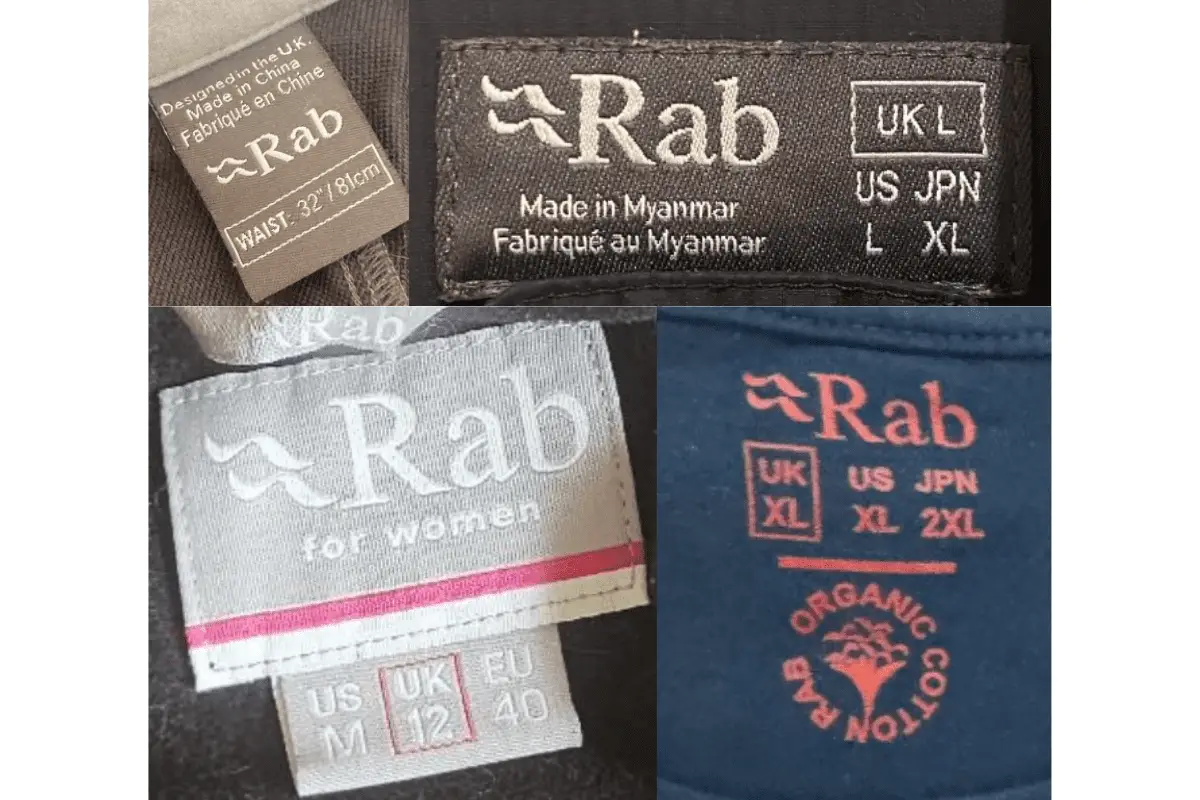
2010s Rab tags
